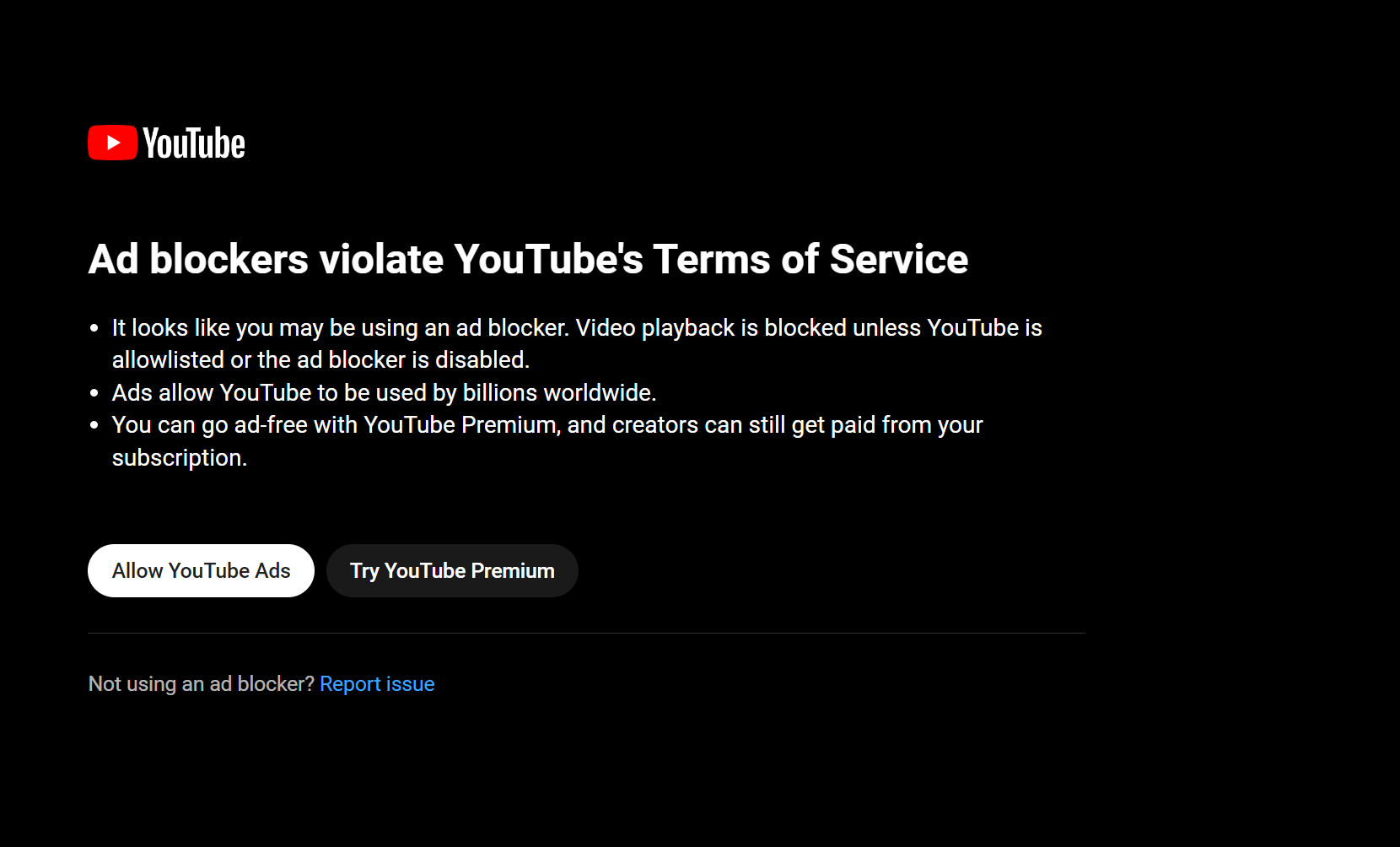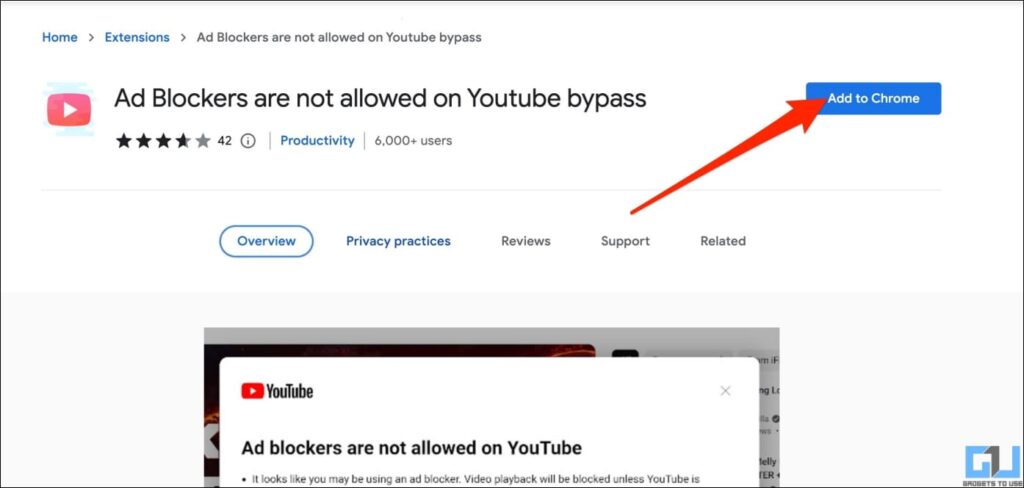We all know the struggle of sitting through ads while trying to enjoy our favorite YouTube content. Recently, YouTube has ramped up its anti-adblock measures, making it harder for users to bypass ads. In this post, we will discuss what these measures look like and offer insight into how to navigate this evolving landscape. Whether you're a casual viewer or a die-hard
Understanding YouTube's Anti-Adblock Measures

YouTube has implemented several techniques to combat adblockers, ensuring that advertisers can deliver ads effectively. These measures are designed not just to deter users from using ad-blocking software but also to enhance the overall monetization of the platform. Here’s a breakdown of the most common strategies:
- Detection Scripts: YouTube employs scripts that detect whether a viewer has an adblocker activated. If detected, users may receive prompts encouraging them to disable their adblocker or may be blocked from viewing content altogether.
- Ad Delivery Networks: YouTube uses various ad delivery networks that may bypass adblockers entirely. These ads can appear in different formats—pre-roll, mid-roll, or even overlay ads—making them harder to filter out.
- Ad Refreshing: If a user skips an ad, YouTube can refresh the ad or serve a new ad in its place. This means that even if you manage to skip an ad, you may find another one right around the corner.
- Feature Promotion: YouTube actively promotes YouTube Premium, a subscription service that allows users to watch videos ad-free. This is another layer of their strategy, nudging users towards considering a paid option instead of relying on adblockers.
In summary, YouTube's anti-adblock measures aim to protect its revenue model while maintaining a user-friendly experience. Understanding these strategies can help viewers make informed decisions about how to approach their viewing habits in the face of these growing restrictions.
3. Common Methods to Bypass Adblocker Restrictions

Alright, let’s dive into some of the common methods you can use to bypass those pesky YouTube adblocker restrictions. While it might sound like a bit of a tech-savvy endeavor, most of these methods are simple enough for anyone to try!
- Disabling Adblocker Temporarily: This is probably the easiest method. Just click on your adblocker extension and select "Disable on this site." This way, you can enjoy the content without interruptions while supporting creators.
- Using Developer Tools: If you’re comfortable with a bit of tech, you can access your browser's developer tools (usually by right-clicking and selecting "Inspect"). This allows you to modify page elements, although this method is more complex and requires a gentle touch.
- Refreshing the URL: Sometimes simply reloading the page or using its shortened version can bypass the restriction. Just take that URL, add a little twist, and see if it lets you in without the ads!
- Using a VPN: A Virtual Private Network not only helps with privacy but can sometimes allow you access to content without the adblocker restrictions, depending on the server location you're connected to.
- Incognito Mode: Opening YouTube in your browser’s incognito mode often bypasses adblocker limitations. This isn’t a foolproof method, but it’s worth a shot!
Remember, though, while these methods can help, it’s essential to consider the impact on content creators who rely on ad revenue. Supporting them in some way can go a long way!
4. Using Alternative Browsers and Extensions

Another clever way to navigate the YouTube landscape and dodge those restrictive ads is by using alternative browsers and extensions. This might seem like a no-brainer, but you’d be surprised at how much difference it can make!
Here are some popular browsers and a few extensions worth exploring:
| Browser/Extension | Features |
|---|---|
| Brave Browser | Built-in ad and tracker blocking. Plus, it’s super fast and has a great user interface! |
| Firefox with Enhanced Tracking Protection | Strong privacy features, customizable options, and a robust ecosystem of add-ons to further limit ads. |
| Opera | Includes a free VPN and a built-in ad blocker. It’s designed to manage your online habits more efficiently. |
| uBlock Origin | This extension works across various browsers and is known for its efficiency and low resource consumption. |
| AdGuard | A powerful extension capable of ad blocking, tracking protection, and even parental controls. |
By switching to one of these browsers or using dedicated extensions, you can significantly improve your YouTube experience while keeping those annoying ads at bay. Plus, you may even discover some great features that enhance your overall browsing experience.
5. Adjusting Browser Settings for Adblocker Bypass
Hey there! If you're feeling frustrated with the new ad blocker restrictions on YouTube, you're not alone. Luckily, there’s a way to adjust your browser settings that might help you get around those pesky ads. Let’s dive into some simple adjustments you can make!
First, consider the following browser settings:
- Allow Cookies: Some ad blockers might interfere with how YouTube tracks your viewing habits. Go into your browser's settings and enable cookies for YouTube.
- Disable Hardware Acceleration: Some users have reported that turning off hardware acceleration can improve compatibility with streaming services. You can find this option in the advanced settings of your browser.
- Clear Cache and Cookies: Sometimes, an overloaded cache can create issues. Make it a habit to clear your browser's cache regularly.
- Whitelist YouTube: Most ad blockers have an option to whitelist specific websites. Adding YouTube to your whitelist can stop ads from being blocked, allowing you to watch your videos smoothly.
Moreover, consider switching to a different browser that may have more lenient ad blocking policies or experimenting with different ad blocker extensions. Just remember that while these adjustments may help you enjoy content without interruptions, you’re still encouraged to support creators in whatever way you can!
6. Exploring YouTube Premium as an Option
If adjusting your browser settings feels like a hassle or doesn’t seem to be quite cutting it, why not consider YouTube Premium? It’s a super convenient option that not only allows you to bypass ads but also comes with some fantastic perks!
Here are a few benefits of subscribing to YouTube Premium:
- No Ads: Enjoy uninterrupted viewing without any ads, which means more time for binge-watching your favorite channels!
- Offline Viewing: Download videos for later viewing while you're on the go—great for long commutes or travel without Wi-Fi.
- Background Play: Listen to videos with the app minimized, a feature especially useful for music and podcasts.
- YouTube Music: Get access to the music streaming service at no extra cost, allowing you to explore millions of songs.
While the monthly fee might feel like a drawback, many users find that the benefits outweigh the cost. Plus, you’re directly supporting your favorite creators! So, if you're tired of ads cluttering your viewing experience, YouTube Premium might just be the ticket for a smoother, more enjoyable ride.
How to Bypass New YouTube Ad Blocker Restrictions
YouTube has constantly been evolving, and with recent changes, it has become increasingly difficult for users to enjoy ad-free viewing experiences. Many users have turned to ad blockers to circumvent the numerous ads that interrupt their viewing pleasure. However, YouTube has introduced new restrictions to detect and block these ad blockers, leaving users searching for solutions. This article outlines several strategies to bypass the new YouTube ad blocker restrictions.
1. Use Alternative Browsers
Some browsers have built-in ad blocking features or work better with ad blockers:
- Brave Browser: Offers robust ad-blocking and privacy features.
- Firefox with Add-ons: Use specific add-ons like uBlock Origin.
2. Modify Host Files
Advanced users can edit their operating system's host files to block YouTube's ad servers. This involves:
- Finding the host file (location varies by OS).
- Adding entries to redirect ad servers to localhost.
3. Use VPNs and Proxies
Using a Virtual Private Network (VPN) can help mask your traffic and potentially avoid detection:
| VPN Provider | Features |
|---|---|
| NordVPN | Fast speeds, strong encryption |
| ExpressVPN | Excellent for streaming, user-friendly |
4. Adjust Browser Settings
Make changes in your browser settings to prevent YouTube from detecting ad blockers:
- Disable JavaScript (might affect functionality).
- Clear cookies and cache regularly.
By implementing one or more of these methods, users can regain control over their YouTube viewing experience and enjoy content without interruptions. However, it's important to consider the ethical implications of bypassing ads, as they are a primary revenue stream for content creators.
 admin
admin








